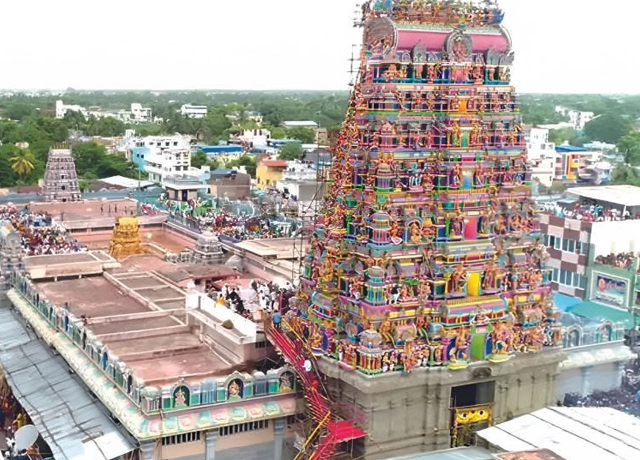Trichy Tour Package
Let the pristine land of Tiruchirappalli itself narrate to you its story! Seated on the banks of Kaveri River, Tiruchirappalli is an educational and industrial city in the state of Tamil Nadu. In 3rd-century BC, the city was the capital of the early Cholas and later Pallavas, Pandyas, Medieval Cholas, Vijayanagaras, Delhi Sultanate, and Madurai Nayaks. The scenic charm and picturesque attractions make Tiruchirapalli amongst the most travelled destinations in Tamil Nadu. Moreover, the city has a rich cultural heritage which can be easily seen through its various monuments and temples.

Srirangam Renganatha Swamy Temple
Srirangam is the foremost of the eight self-manifested shrines (Swayam Vyakata Kshetras ) of Lord Vishnu. Sri Renganatha Swamy temple, established in a 156 acre land, is a great vaishnavite temple dedicated to Lord Vishnu. It is also considered the first, foremost and the most important of the 108 main Vishnu temples. This temple is also known as Thiruvaranga Tirupati, Periyakoil, Bhoologa Vaikundam and Bhogamandabam. The enclosures are guarded by thick and huge rampart walls. There are 21 magnificent and huge towers. This temple lies on an islet formed by the twin rivers Cauvery and Coleroon. This temple underwent many changes during the rule of Cholas, Cheras, Pandiyas, Hoysalas, Vijayanagar kings and Nayak of Madurai. The temple is located 12 kms From Central Bus Stand and 5 kms from Chathiram Bus Stand. Trichy.

Thiruvanaikaval Jambugeshwarar Temple
Jambukeswarar Temple, Thiruvanaikaval is a temple of Shiva in Tiruchirapalli district, in the state of Tamil Nadu, India. It is one of the five major Shiva Temples of Tamil Nadu representing the Mahābhūta or five elements; this temple represents the element of water, or neer in Tamil. The sanctum of Jambukeswara has an underground stream.

Uchi Pillaiyaar Temple

Trichy Thayumanavar Temple

Trichy Samayapuram Mariamman Temple
Arulmigu Sri Mariamman Temple, Samayapuram is an ancient Hindu temple in Tiruchirappalli district in Tamil Nadu, India. The main deity, Samayapuram Mariamman, a form of Adi Parashakti and Mariamman, is made of sand and clay with extractions of medicinal herbs unlike many of the traditional stone idols and is considered as most powerful Goddess, and hence unlike many other Hindu deities there are no abhishekams (sacred bathing) conducted to the main deity, but instead the “abishekam” is done to the small stone statue in front of it.
